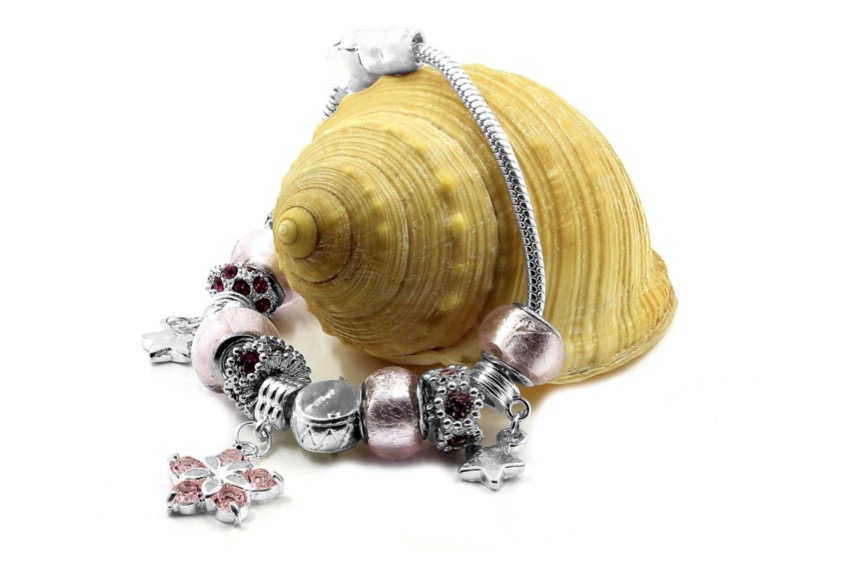High-end fashion jewelry is stunning; it smacks of style and sophistication, class, and prestige. Rubies, sapphires, emeralds, and diamonds are the stuff of legend. They sparkle with brilliant radiance, drawing desirous ooh’s and ah’s from gentlemen and ladies in high society.
Indeed, these fine accouterments are the tincture separating the well-heeled from the common folk. But alas, jewelry sparkles for all who behold its beauty, and you needn’t pay a pretty penny for a fabulous piece of art. It is said that beauty is in the eye of the beholder – a transcendent and all-encompassing reality for those who enjoy luxury par excellence.
In the old days, gentlemen sported a pair of diamond-encrusted gold cufflinks, a Rolex, Breitling, JBW, or Tag Heuer. These status symbols cost a pretty penny, but they were deemed well worth it to display societal status. For the ladies, it was the entire spectrum. Everything from ostentatious necklaces to outrageously bulky jewel-encrusted pendants, brooches, and earrings was fair game.
Legacy pieces passed down through the generations became keepsakes worth a bundle. Recall the inimitable Cleopatra, Pharaoh of Egypt, who you can see in the Cleopatra MegaJackpots slot, with her magnificent golden jewelry – these heirlooms are best preserved in fortified museums and bank vaults.
Big, bulky, and flashy jewelry has largely been replaced by sleek, slender, and stylish jewelry items. And they’re not exactly what you have in mind.
The tech revolution has relegated traditional timepieces to the annals of history.
Indeed, tech companies are transforming the world with gadgets like iPhones, AirPods, iWatches, iPads, and iPods. These are the new status symbols, and they determine the ‘in-crowd.’ While expensive jewelry remains in vogue, it seems to be lost on Millennials and Generation Z.
The new generation is all about saving money, cutting expenses, and leveraging technology for maximum benefit. To this end, they are far more likely to pass on spending hard-earned cash on gemstones, 24-karat gold, and diamond earrings.
Besides, there is little investment value in jewelry. Most jewelry items are purchased at outrageously high retail prices from malls. The price represents a premium paid to jewelers, a.k.a. massive profit for them to pay their overheads, salaries, and markups.
Jewelry makes for a precious keepsake, but it’s not easily transferable into cash.
Put differently, the price you pay for jewelry nowhere near represents the market value of your purchases. Still not convinced? In South Africa, for example – one of the world’s leading producers of gold, 9-carat gold is a popular option for necklaces and rings.
Depending on the design and retailer, you might see a 9-carat gold necklace retailing for $1000 – $1500. But the market value of such a necklace is simply the gold price. That translates into approximately $19 per gram for 9-carat gold and roughly $53.28 per gram of 24-karat gold.
Curious to know how many grams a standard gold necklace is?
Anywhere from 16.6 g – 45 g. Depending on the thickness (4 mm, 5 mm, 5.5 mm, 6 mm, et cetera), costs vary accordingly. When it comes to gemstones such as diamonds, emeralds, rubies, and sapphires, valuation depends on multiple factors such as cut, color, clarity, and karat – the inimitable 4Cs of gemstones.
But that is not meant to deter you from owning high-end jewelry – it simply makes a case for being cautious. Anyone can price jewelry at outrageous prices, but the actual value is always determined by how much somebody is able and willing to pay for it. That’s why jewelry is not a safe investment.
It’s not easily converted into cash, and when it is sold, the price is often substantially lower than what you paid. Indeed, jewelry stores and pawnbrokers pay next to nothing for expensive jewelry. The best market is always a private sale with a serious buyer. But these transactions take time to process, especially in a faltering global economy.





